Table of Contents
ToggleIn a world where communication barriers can feel taller than the Eiffel Tower, blockchain translation swoops in like a superhero. Imagine a technology that not only breaks down language walls but does it with the security of a vault and the speed of a cheetah on caffeine. This isn’t just tech jargon; it’s the future of how we exchange ideas across the globe.
Understanding Blockchain Translation
Blockchain translation represents a breakthrough in overcoming language barriers in global communication. This technology enhances the exchange of ideas, making interactions more secure and efficient.
Definition and Significance
Blockchain translation refers to the process of translating content using blockchain technology. This method ensures transparency, security, and immutability of translations. Each translation becomes a part of a decentralized ledger, allowing verification at every step. The significance lies in its ability to facilitate seamless communication across diverse languages while maintaining data integrity. It fosters trust between parties involved in cross-border transactions, thereby enhancing global collaboration in various sectors, including finance, healthcare, and technology.
How It Works
Blockchain translation works through a network of decentralized nodes that verify and store translations on a secure ledger. When a piece of content requires translation, it gets encrypted and distributed to multiple nodes. Each node contributes its translation, which is then validated and recorded. This collaboration speeds up the translation process, reducing time and costs associated with traditional methods. The immutability of blockchain ensures that once a translation is recorded, it cannot be altered, providing a reliable reference point for all parties involved.
The Role of Blockchain in Translation Services

Blockchain technology revolutionizes translation services, providing faster and more reliable communication across language barriers.
Decentralization Benefits
Decentralization enhances translation services by distributing data across multiple nodes. Each participant in the network contributes to a shared ledger, reducing reliance on single entities. This structure boosts reliability and mitigates the risk of data tampering. Quality improves through community collaboration, as contributors can share insights and corrections. Decentralization also lowers costs by eliminating intermediaries typical in traditional translation services. These benefits lead to faster translations and broader access to multilingual resources.
Security and Privacy Risks
Security and privacy remain critical in blockchain translation. While the technology offers robust encryption, vulnerabilities may still persist in smart contracts and user interfaces. Data entries, even if immutable, risk exposure if private information is linked without proper safeguards. Users must remain cautious about data sharing and ensure compliance with regulations like GDPR. Protocols must be in place to protect confidential translations and maintain user anonymity. Addressing these challenges increases trust and adoption among users seeking secure translation solutions.
Current Applications of Blockchain Translation
Blockchain translation currently transforms various sectors, enhancing communication across language barriers with increased security and efficiency.
Case Studies
Ethereum-based platforms exemplify blockchain translation’s impact. For instance, the Gengo platform utilizes Ethereum’s smart contracts to streamline translation processes. By connecting clients with translators directly, it reduces costs and improves turnaround times. Another example includes WTranslation, which leverages blockchain to tokenize translation services. This model incentivizes quality translations through a reward system, allowing users to assess translator performance based on blockchain records. These case studies illustrate practical applications of blockchain technology in enhancing trust and efficiency within the translation industry.
Industry Examples
Several industries benefit from blockchain translation. The legal industry employs this technology to create tamper-proof records of multilingual contracts. It ensures that all parties access reliable, consistent translations. In the healthcare sector, blockchain translation aids in patient data sharing, enabling precise communication of medical information across languages, enhancing patient safety. The financial services industry utilizes blockchain to translate documents and communications securely, minimizing risks associated with errors and misinterpretations. These industry examples highlight blockchain translation’s versatility in improving processes and fostering trust in critical communications.
Future Trends in Blockchain Translation
Emerging trends indicate significant growth and innovation in blockchain translation. Continued advancements in technology and expanding market potential shape the future landscape.
Technological Advancements
Innovative technologies drive the evolution of blockchain translation. Artificial intelligence (AI) and machine learning enhance translation accuracy by automating processes efficiently. Smart contracts simplify transaction management, allowing for seamless collaboration between clients and translators. Decentralized autonomous organizations (DAOs) could manage translation projects, promoting transparency and trust among participants. Furthermore, improvements in blockchain scalability address speed and storage needs, making widespread adoption practical.
Market Potential
The market for blockchain translation is poised for substantial expansion. Increasing globalization necessitates effective communication across languages, making blockchain solutions attractive to businesses. A growing number of industries, including finance, healthcare, and legal sectors, adopt these technologies to streamline processes and enhance security. Research estimates project the blockchain translation market to reach $10 billion by 2025, driven by rising demand for reliable and cost-effective solutions. As more organizations recognize the benefits of blockchain in translation services, investments in this sector are likely to surge.
Blockchain translation is poised to redefine how the world communicates across language barriers. By leveraging its unique features like transparency and immutability, this technology enhances trust and efficiency in translation processes. As industries increasingly adopt blockchain solutions, the potential for improved communication and collaboration grows.
The future of blockchain translation looks promising with innovations like AI and machine learning driving accuracy and efficiency. As organizations continue to explore this revolutionary approach, the market is set to expand significantly. Embracing blockchain translation may very well be the key to unlocking seamless global communication in an ever-connected world.






